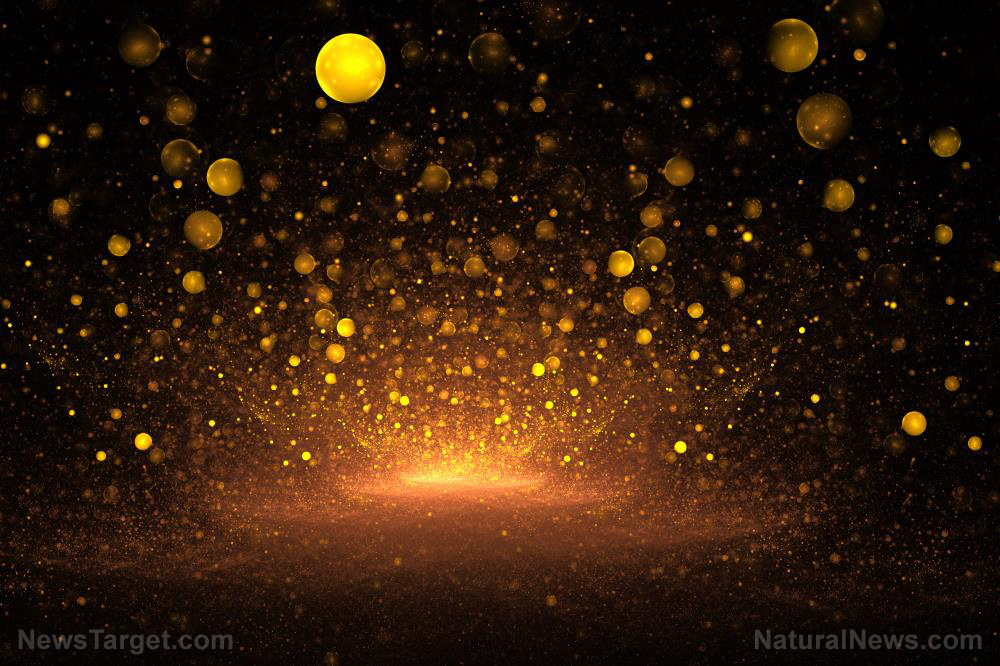
Gold has been found in other plants before. A species of alfalfa was even cultivated so that its tissues could draw pure gold from its surroundings and store the metal.
The study investigated the ramie and horseweed plants. Ramie is a perennial shrub that serves as an important source of natural fibers in East Asia. Horseweed is a biennial weed that originated in North America; it is sometimes used in herbal medicine.
The Sun Yat-sen University (SYSU) research team studied how ramie and horseweed were able to collect gold nanoparticles from the environment. They gathered samples of both plants from their natural habitats and prepared them accordingly. (Related: Magnetic nanoparticles seen as effective material for stopping internal bleeding.)
Two common plants absorb and accumulate gold nanoparticles
Study author Xiaoen Luo and her fellow researchers used the field-emission variant of a transmission electron microscope (TEM) to analyze the plant samples. A TEM forms an entire image of an object almost instantaneously by sending a very thin beam of electrons through it.
Luo's team reported that they found gold-bearing nanoparticles in both ramie and horseweed samples. The nano-scale particles were not made of pure gold; they were fused with copper, oxygen, or other elements.
In the horseweed samples, the size of the particles ranged from 20 to 50 nanometers in diameter. They also tended towards irregular forms with no standard shape.
Meanwhile, the nanoparticles in the ramie samples came in three shapes: circular, elliptical or rod-like. Whatever their shape, their edges were smooth. They were also smaller than the gold nanoparticles in horseweed, their biggest representative measuring only 15 nanometers across.
"The abundance of gold in the crust is very low and there was no metal deposit in the sampling area," remarked study co-author Jianjin Cao of the SYSU.
Gold nanoparticles in plants theorized to come from air pollution
His theory is that the gold nanoparticles came from an electroplating plant in the vicinity of the samples. Such facilities use gold in their processes and release particles into the air.
The result of the experiment appeared to validate Cao's theory. Upon in-depth analysis, the nanoparticles in the two plants displayed certain characteristics that suggested they originated from man-made sources above-ground instead of natural sources beneath the earth.
Luo and Cao further believe the nanoparticles entered the plant by passing through the pores on its surface. They theorize that a plant could absorb gold that it has absorbed from air and water as well as from soil.
"Discovering gold-bearing nanoparticles in natural plant tissues is of great significance and allows new possibilities to clean up areas contaminated with nanoparticles, and also to enrich gold nanoparticles using plants," Luo said.
The SYSU researchers published their findings in the scientific journal Environmental Chemistry Letters. In the future, they will ascertain the specific means by which the gold nanoparticles enter the plan, the parts in the individual ramie and horseweed plants that store the particles, and the accumulation pattern of the metal.
Furthermore, Luo and Cao's research team will determine the ability of various plants to absorb gold nanoparticles from areas with significant amounts of pollution.
Metal nanoparticles are used for the targeted treatment of diseases such as Alzheimer's disease. However, the biological effects of gold nanoparticles on plants and the animals that consume them are not yet known.
Visit Pollution.news to read more about obscure kinds of pollution.
Sources include:
Please contact us for more information.























